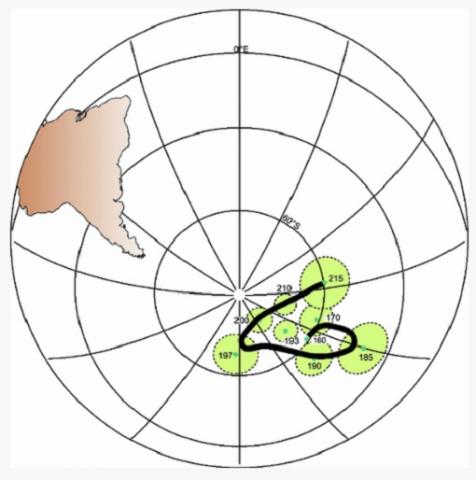María Paula Iglesia Llanos, Claudia Beatriz Prezzi
2 013
International Journal of Earth Sciences April 2013, Volume 102, Issue 3, pp 745–759
From the Late Carboniferous until the Middle Jurassic, continents were assembled in a quasi-rigid supercontinent called Pangea. The first palaeomagnetic data of South America indicated that the continent remained stationary in similar present-day latitudes during most of the Mesozoic and even the Palaeozoic. However, new palaeomagnetic data suggest that such a scenario is not likely, at least for the Jurassic. In order to test the stationary versus the dynamic-continent model, we studied the Jurassic apparent polar wander paths of the major continents, that is, Eurasia, Africa and North America that all in all show the same shape and chronology of the tracks with respect to those from South America. We thus present a master path that could be useful for the Jurassic Pangea. One of the most remarkable features observed in the path is the change in pole positions at ~197 Ma (Early Jurassic), which denotes the cessation of the counter-clockwise rotation of Pangea and commencement of a clockwise rotation that brought about changes in palaeolatitude and orientation until the end of the Early Jurassic (185 Ma). Here, we analyse a number of phenomena that could have triggered the polar shift between 197 and 185 Ma and conclude that true polar wander is the most likely. In order to do this, we used Morgan’s (Tectonophysics 94:123–139, 1983) grid of hotspots and performed “absolute” palaeogeographical reconstructions of Pangea for the Late Triassic and Jurassic. The palaeolatitudes changes that we observe from our palaeomagnetic data are very well sustained by diverse palaeoclimatic proxies derived from geological and palaeoecological data at this time of both the southern and northern hemispheres.

